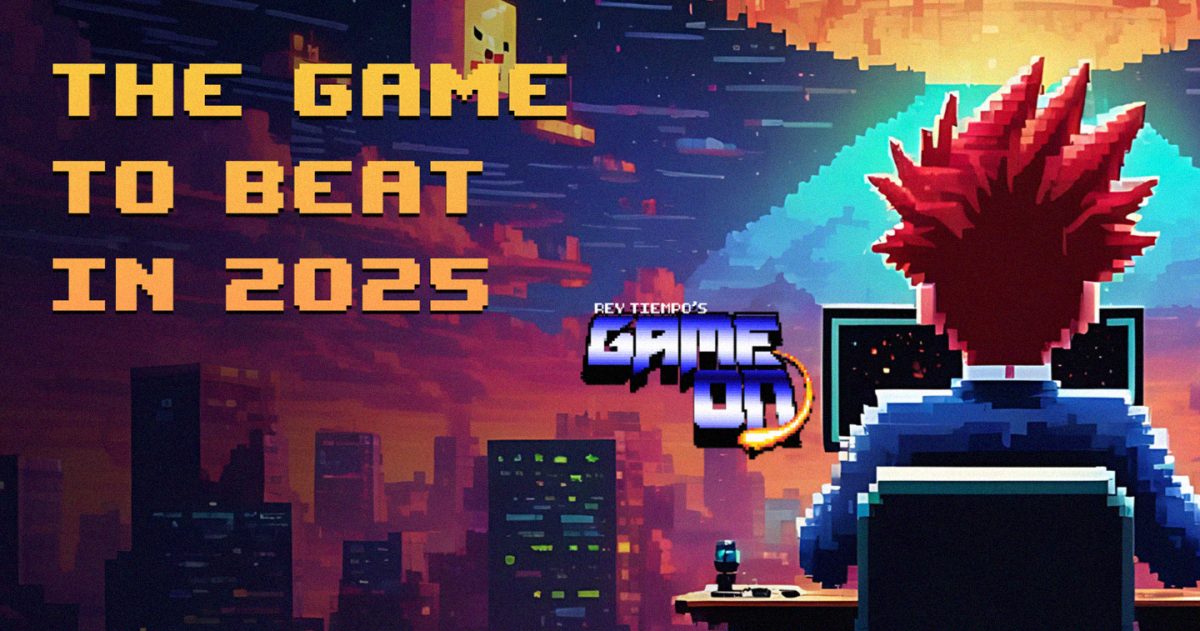MANILA, PHILIPPINES – Celebrating the one and only game from the previous year that made an impact for us here at Game On (making this quite possibly the earliest Game of the Year award announcement yet!)
We realize of course that revealing our choice for THE one and only game means almost certainly that we will be raising so many gatekeeping eyebrows.
Gaming has now become so huge, the audience so diverse, the communities and peripheral interest groups so varied – it’s almost inevitable that everyone will have their own picks. (The Game Awards from late last year has already caused so much unnecessary uproar. We get it, everyone has their favorites.)
Often, it really does boil down to personal choice (aren’t they all?) But that’s exactly what brought us to this decision: celebrating a piece of work that hit us deeply, on many personal levels.
So without further ado, The Game On Game to Beat: the one and only game from 2024 that for us, sets the bar for this year’s new game releases – viewed, of course, through Game On’s unique Gaming X Marketing lens.
Congratulations to: “Until Then” from Polychroma Games.
Until Then is an interactive narrative-based game, about a high school boy living in an alternate timeline Philippines, one shaped by a global catastrophe (familiar?) We won’t delve too much into the story’s details to avoid spoilers, that’s for all the Wiki’s and the Let’s Plays out there. But Philippine-based studio Polychroma Games has crafted an experience that exceeded our expectations.
Rey Tiempo, our Game On captain, got the chance to sit down with two of Polychroma Games’ team members in an unforgettable Zoom call for the ages!

When “Until Then” was announced early last year, I was immediately curious, especially since it was created right here in the Philippines with an all-Filipino team, and was set to launch on major gaming platforms. I couldn’t wait to play it. But I’ll admit, I was also cautious. I warned myself not to get overly enthusiastic — because I’ve been let down many, many times before by locally created games.
I fell in love with Until Then. And the more I played, the more I fell in love with it, over again, and again.
I laughed, I cried. I cursed some characters. I cheered for most. But most of all, I cheered for the work.
It immediately ranked as one of my best gaming experiences, ever. As a longtime gamer (who admittedly enjoys some genres more than others), I was pleasantly surprised that the game had me this hooked and invested. Probably because its concept lends itself to surprisingly varied gameplay tropes. (Don’t expect any heavy combat, though—sorry, Soulsborne fans.)
More importantly, as a Filipino gamer, I didn’t just feel pride, I felt relief. Relief that this local, relatively young team was able to pull off something that feels so… mature and effortless.
Polychroma Games delivered an exceptional piece of work, free from the usual creative or executional pitfalls that often plague locally produced games. And for me, that’s the hallmark of great art: when the experience it evokes feels effortless, like the creators are almost making it look easy.
An impressive feat—especially after speaking to the team and realizing just how much hard work went into this labor of love.
Until Then is a masterpiece of local tradition and pop culture sensibilities, rolled into one magnificent, sometimes scary, always charming coming-of-age adventure.
The writing is top-notch. The art direction fits the overall tone, and more importantly, the intent. In fact, all the elements come together into one cohesive whole, with nothing feeling out of place.
Humor is arguably one of the game’s strongest qualities, blending youthful charm with poignant maturity. The USB drive mini-game alone (no spoilers, just go experience it yourself) is worth the price of the entire game. No exaggeration!
Everything about this work feels incredibly mature and confident. And through the lens of Game On, it’s an experience that connects with the gamer on so many levels.
That, perhaps, was the biggest surprise for me: that a game could be this mature and self-assured in its delivery, especially coming from a team composed of relatively young members.
I immediately reached out to Polychroma Games—I couldn’t wait to get the chance to pick this team’s brains!
The team members who eventually joined me on the call were two bright-eyed young women, almost fresh out of college, brimming with exuberance, charm, and the energy to follow their passions and do what they love: Senior Art Director, Dominique Duran, and Writer, Mariel Tuble.
Rey: Please introduce yourselves!
Dominique: I’m Dominique Duran, Senior Art Director for Until Then. I studied at Quezon City Science High School, which was quite a different path from the arts. Being in a science school made me realize even more that I wanted to pursue a creative career, which wasn’t the best news for my parents at the time. I eventually went to the University of the Philippines Diliman and studied Fine Arts with a major in Visual Communication. After graduation, I started with freelance commissions like many artists trying to establish themselves. One of my first big jobs was as the Art Director for Until Then, where I helped develop the visual identity of the game.
Mariel: And I’m Mariel Tuble, one of the writers for Until Then. My background is in journalism and personal essay writing, but writing for games has always been my dream. This is what I’ve wanted to do, and I’m excited to be part of this project. I went to high school in Bacolod, where I was heavily involved in competitive journalism. For college, I wanted to explore the more artistic side of writing, so I studied Creative Writing at Ateneo de Manila University. My main interest has always been essays and non-fiction writing, and I’ve been working on a graphic memoir as well.
I joined Until Then because I always wanted to write for games. At first, it was a short-term contract, but eventually, I became a full-time writer for the game. The opportunity came during the pandemic, and it was an amazing way to start my career in game writing.
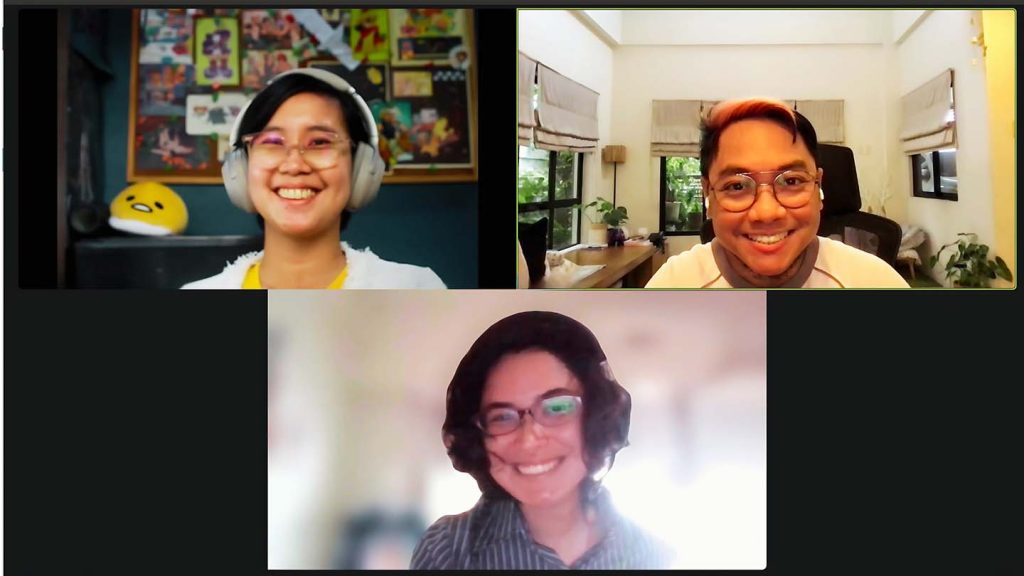
Rey: Until Then means a lot of different things, I am sure to everyone who has played it. For me, it’s a triumph of a great storytelling and narrative. How would you describe Until Then, in your own words?
Mariel: Until Then is a story about loss, growing up, and dealing with change. We wanted to create an emotional experience that resonates with people. At its core, it’s a very Filipino story because it’s what we know, it wouldn’t make sense for us to write anything else. There’s a lot more I could say, but I don’t want to give away too much!
Dominique: It’s a coming-of-age story where external factors propel the protagonist, Mark, into maturity. The narrative explores how we deal with grief, change, and the facades we put up in our relationships. In Filipino culture, we often approach things with a sense of lightheartedness, even in serious situations, like how wakes become gatherings for reconnecting with family. The story reflects this, particularly through a character like Kathy, who maintains a cheerful facade despite deeper struggles.
The emotional depth of Until Then lies in understanding people beyond their surface-level interactions. It’s about growing up and realizing that relationships are more complex than they seem.
Rey: Was the story always meant to be told that way, or did it change during development?
Dominique: When I joined, a lot of the structure was already in place: the beats of the story, how it starts, and how it ends. But as we developed it, things changed and evolved naturally. The middle sections, in particular, shifted as we refined the narrative and deepened the characters.
Mariel: The core idea was always solid, but the writing process involved constant evolution. Our brainstorming sessions were heavily influenced by different media, and those inspirations kept shaping the story. Mickole, our lead writer, had a strong vision from the start, but we adapted and refined it along the way.
Rey: What were some of your creative influences while working on Until Then?
Mariel: There have been comparisons to Life is Strange, but one of the biggest inspirations was Night in the Woods. When I applied for the job, I mentioned it in my cover letter, and that connection helped me get hired. The way that game explores small-town life and deep emotions resonated with what we wanted to do.
Beyond games, anime was also a big influence, especially Orange, which deals with themes of regret and second chances. We also drew inspiration from The Rehearsal by Nathan Fielder, which explores human relationships in unexpected ways.
Dominique: The game’s emotional depth and visual storytelling were shaped by various influences. We took elements from different media: films, books, and personal experiences, to create something that feels authentic and engaging.
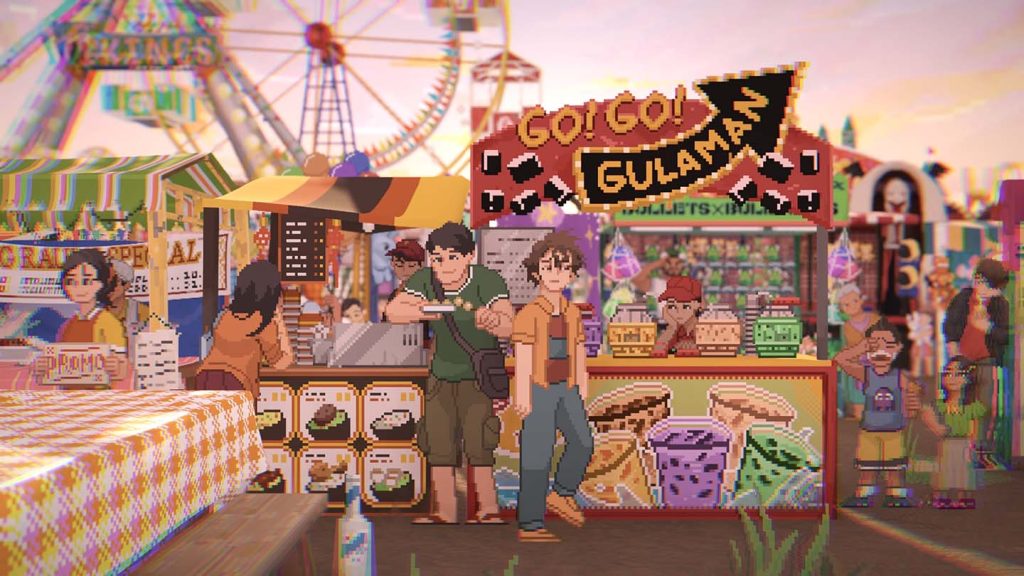
Rey: What do you think sets Until Then apart from other Filipino games?
Dominique: The emotional maturity of the story. Many Filipino games focus on action, horror, or folklore, but Until Then is about everyday life and personal struggles. It’s grounded in reality, yet it still feels cinematic and immersive.
Mariel: The depth of cultural nuance. We didn’t just insert Filipino elements for the sake of representation. We built the story around experiences and emotions that are deeply familiar to Filipinos. That’s what makes it unique.
Rey: The mini-games were an absolute delight, those special tiny moments woven into the narrative. Can you tell us how they came about?
Mariel: The mini-games were inspired by everyday Filipino experiences, like passing coins in a jeepney or struggling with a USB that won’t plug in properly. These are little things that feel small, but when you see them in a game, they immediately connect with players because they’ve lived through them.
Dominique: Exactly. Some were also inspired by other games. For example, the horror house section took inspiration from Ib, while the rhythm mini-game took cues from Guitar Hero. The goal was to make sure that the mini-games weren’t just filler content, but an extension of the story. Each one plays a role in immersing players into the world of Until Then.
Rey: The game is filled with Pinoy cultural references—were there specific guidelines on what to include or leave out?
Dominique: We wanted the world to feel lived-in. One of my main art directions was to make sure environments looked real: messy, used, with signs of everyday life. That’s why you see things like worn-out buildings, graffiti, and cluttered public spaces.
Mariel: The humor and realism of the references were also key. For example, the scene with a vendor selling colored chicks. It’s something that was common in the past but isn’t really seen as much anymore. But when we put it in, it was such a strong memory for many people that it just made sense to keep it.
Dominique: We never aimed to be overly polished or idealized. The world in Until Then is raw, just like the Philippines we know. Even the sound design reflects that. There’s a scene where Mark is having a serious moment, but in the background, you can hear a taho vendor passing by. That’s real life – the world doesn’t stop for your personal problems.
Rey: The game is set in 2014. Any specific reasons why?
Mariel: We wanted a time period that felt recent enough for people to relate to, but still distant enough to feel nostalgic. Also, memes and online culture evolve fast, so grounding the game in 2014 allowed us to reference internet humor from that era without it feeling outdated.
Dominique: It’s also about capturing a certain teenage experience, what social media felt like back then, how people interacted online, what school life was like at the time. It makes the story feel more authentic.
Rey: Speaking of social media, the in-game interactions feel incredibly realistic. How did you approach writing them?
Mariel: That was one of the most fun parts of my job! I basically had to become different types of Facebook users! I would write fake arguments with myself in the comments section, just to capture the chaos of how people interacted online. I also went back to my old Facebook timeline to see how people spoke, what they posted, and how conversations flowed back then.
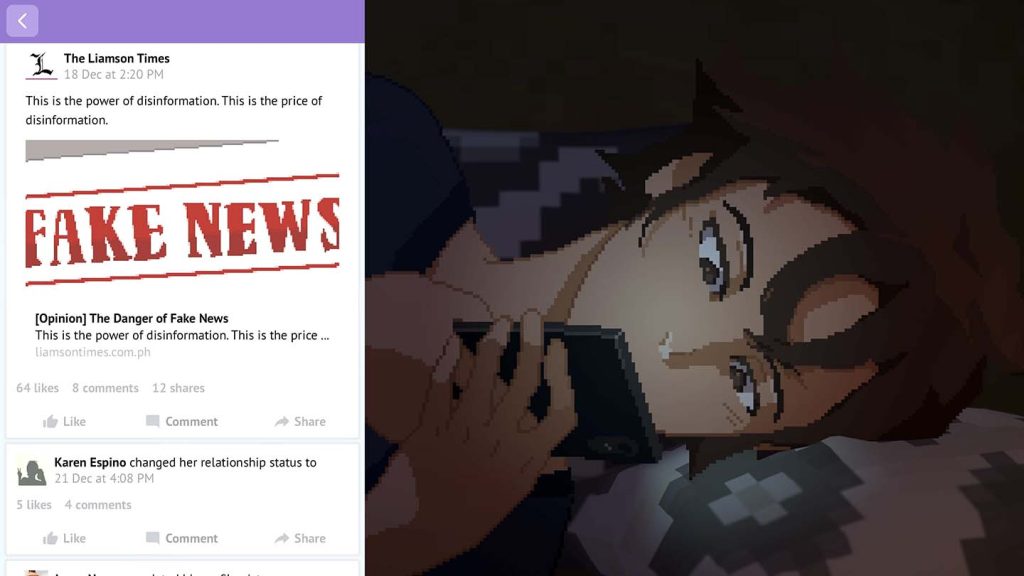
We wanted the in-game social media posts to feel authentic, whether it’s teens talking about their crushes, political arguments, or random viral content. It needed to reflect how Filipinos actually use social media.
Rey: The game has a strong emotional core, but the humor is most definitely a highlight. How did you balance that?
Mariel: Filipinos use humor as a coping mechanism. Even in serious situations, we find ways to joke about things. That’s why the game blends emotional depth with lighthearted moments: it mirrors how we actually deal with life.
The brand parodies and fake advertisements were some of my favorite parts to write. They had to be exaggerated but also convincing, just enough to make players do a double-take and go, “Wait, is this real?”
Dominique: Humor makes the heavier moments hit even harder. If a game is only serious, you start to feel emotionally drained. But when you have humor in between, it makes the emotional beats stand out more.
Rey: The soundtrack and audio design really stood out for me. Can you share a bit about the role music plays in the game?
Dominique: A lot of our team members are musicians, so music was always a big focus. The piano theme was a natural choice. It’s emotional, personal, and ties into the character’s journey.
Mariel: The sound design is also very intentional. There’s a scene where Mark is having an emotional moment, but in the background, you hear loud street noises and a taho vendor calling out. It reinforces the idea that life keeps going, no matter what you’re going through.
Dominique: Even the way speakers sound was considered. In one scene, a radio plays music through old, crackly speakers, because we wanted it to feel real. Sound plays a huge role in immersion.
Rey: I think we could go on and on about the game, it might take us another alternate timeline to fully dissect everything! But as we wrap this up, do you have any final thoughts on Until Then and its impact?
Mariel: I think what makes Until Then special is its sincerity. We never really set out to make something “mature”—we just wanted to tell a story that felt real, one that reflects Filipino experiences as authentically as possible. That sincerity is what makes it resonate with people, and I think that’s why it stands out.
Dominique: Agreed. The goal was never to force maturity, but rather to tell the story as truthfully as we could. Everything: the visuals, the writing, the music, was created with the intent of making something genuine. That’s why Until Then feels natural rather than trying too hard to be deep.
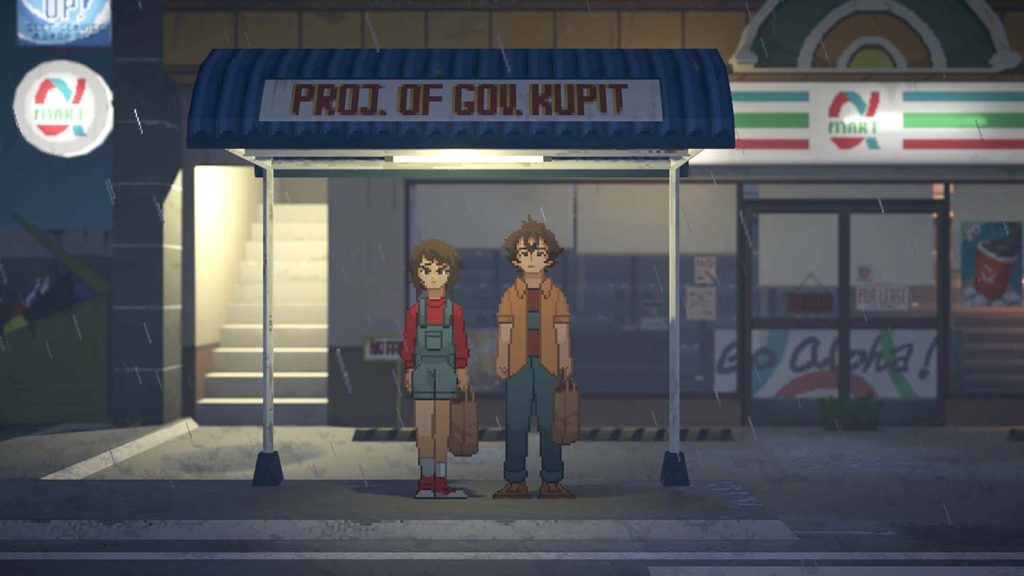
Rey: Many have pointed out, and I personally feel, that Until Then represents a new level of maturity in Filipino storytelling, not just in games but in recent creative output overall. How do you feel about that?
Dominique: Honestly, we didn’t think about “maturity” when making the game. We just wanted to create something that reflected our realities, our culture, and our relationships. But if people see it as a sign that Filipino storytelling is evolving, then that’s amazing.
Mariel: That’s a great compliment! What I love is that more Filipino creators are telling stories that are deeply personal and culturally grounded. If Until Then helps push that movement forward, then we’ve done something right.
Rey: What’s your message to gamers who have yet to experience Until Then?
Mariel: I hope players find something in Until Then that speaks to them. Whether it’s the humor, the emotions, or the cultural nuances, I hope it feels like a story that truly represents us.
Dominique: More than anything, I hope they see that Filipino stories are worth telling. This is a game made by Filipinos, about Filipinos, and for Filipinos—so I hope players see themselves in it and take pride in that.
Rey: Any final words you’d like to share with the Filipino creative community?
Mariel: Keep telling our stories. The Philippines has so much depth, history, and emotion that deserves to be explored in media, whether in games, films, or books.
Dominique: Exactly. We’re at a point where Filipino creativity is being recognized globally. The more we embrace our own narratives, the more we define our space in the industry.
Rey: Any shoutouts?
Mariel: To our team, to everyone who has supported us, and to the Filipino gaming and creative communities—thank you!
Dominic: And to anyone out there who has a story to tell, don’t be afraid to take that first step. You never know where it might lead.
ABOUT GAME ON
Rey Tiempo is a Creative Gaming Brand Specialist. A hardcore gamer since childhood, Rey is the most awarded creative gaming marketer in Asia, with accolades from the world’s biggest creative industry award shows. A veteran creative head with over 25 years’ experience, Rey leads the Gaming and Marketing conversation in the Philippines and Asia, as Founder of Game On, the first and only ad industry column and portal on Gaming X Marketing, and as Founder and Chief Creative Officer of Minotaur, a team of Brand Gamification Specialists. Currently playing: Street Fighter 6, Kunitsu-Gami.

